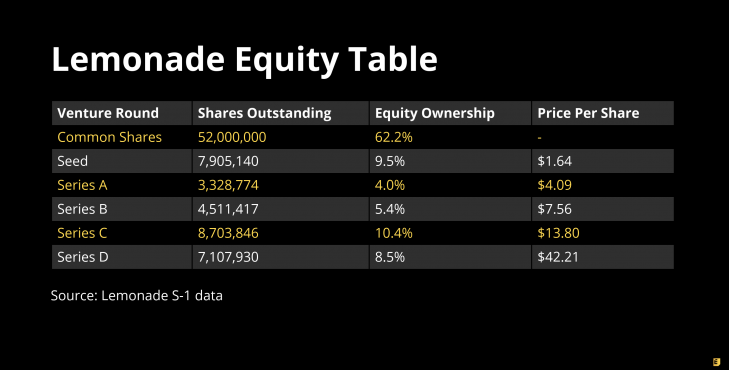“A lot of people denigrate the value of talking about race and racism in technological spaces,” said Ijeoma Oluo, author of So You Want to Talk About Race, which has surged to the top of the New York Times best sellers list in paperback nonfiction, two and a half years after its initial January 2018 publication. “…I don’t think there’s a more important space to be talking about it.”
Oluo and I were talking this January, just before the global pandemic struck, at One Cup Coffee: a no-frills, “more than profit” coffee shop that shares a storefront with a church, and is just down the road from a methadone clinic. The cafe is not far from Oluo’s home in Shoreline, Washington, a city just north of Seattle.
“I’ve seen the absolute best and the absolute worst in race and racism in America on the web,” Oluo continued, “in ways that have had true-life consequences for me and for people I love. [The internet] is a space that is just as real as face-to-face space. And we absolutely have to be looking at it politically and socially, as to how it’s contributing to the way in which we look and deal with each other and how we address issues of inequality and injustice.”
To drive to Shoreline from the posh Seattle neighborhood in which I’d been researching Amazon’s growing campus — which exceeds anything at Harvard and MIT, the two campuses at which I work as a chaplain, in terms of glittering architectural swank — I’d had to pass directly by probably the largest homeless encampments I’ve ever seen in my life. And I’ve led interfaith groups of students to study and volunteer in large homeless encampments.
Speaking of religion and faith, Oluo and I began our 90-minute conversation (edited highlights below) by bonding a bit over our shared interest in “humanism,” a semi-organized movement of atheists, agnostics, and allies who try to do good and live meaningfully without belief in a God. I work as the Humanist Chaplain at Harvard and MIT, and write about humanist philosophy as a kind of secular alternative to religion.
For her part, Oluo accepted an award for feminist humanism from the American Humanist Association in 2018. She delivered her acceptance speech to a mostly white liberal crowd who tended to think of themselves as enlightened and broad-minded and thus took it in stride when she opened by telling them to ‘buckle up,’ as they ate chicken breasts on white plates and black table cloths, busily passing rolls and butter and accidentally clinking their water glasses. But when Oluo told them, “I need for you to not always be looking for the harm others are doing, but look for the harm you are doing,” as my friend Ryan Bell tweeted at the time, “you could hear a pin drop in here.”
Back to this past January, however: as we sipped simple cups of coffee and tea, I told Oluo about the thesis I’ve developed over the course of my year-plus here as TechCrunch’s “Ethicist in Residence”: that the world we call “technology” has grown bigger than any industry, and more impactful than a single culture. Technology has become a secular religion: quite possibly the largest, most influential religion human beings have ever created.
As you’ll see below, Oluo kindly tolerated, maybe even enjoyed the idea, riffing on several possible tech/religion comparisons. Like this one:
One thing tech fundamentally has in common with many religions, at least in America is that it is a white man’s version of Utopia. And tech especially has this cult-like adherence to a white man’s vision of a Utopia that fundamentally disempowers and endangers women and people of color.
I consider myself an agnostic (not necessarily an atheist) toward this new religion of technology, because I want to view tech the way I’ve always tried to view traditional faith: as a mixed bag, something that can do both good and harm, depending on the circumstance. But as multi-billionaire entrepreneurs like Mark Zuckerberg and Jeff Bezos accumulate power; as social media misinformation sways the fate of democracies while artificial intelligence intrudes on justice systems; and as the current pandemic drives more of our life online, I sometimes wonder if I’ll be forced to re-evaluate my own would-be “prophesy.” If we’re not careful, tech could become the most dangerous cult of all time.
Just a bit more context before the interview below, which Oluo and I agreed to call “So You Want to Talk About Race in Tech,” after her book—which was already a major success, but has now reached iconic status nationwide in the wake of George Floyd’s murder.
This article is the last installment of the roughly year-long series I’ve done for TechCrunch, offering in-depth analysis of people and issues in the ethics of technology. So let me just mention that up to now my editors and I have produced 38 articles, with over 150,000 words about mostly women and people of color who happen to be leading efforts to reform and re-envision the ethics of our new technological world.
The series included interviewed Anand Giridharadas on “Silicon Valley’s inequality machine“; Taylor Lorenz on “the ethics of internet culture“; and James Williams on “the adversarial persuasion machine” of efforts by his former employer Google — among others — to distract us to death.
It featured CEOs and venture capitalists disclosing childhood traumas before debating the moral merits of their creations; employees and gig workers speaking painful truth to their powerful employers; as well as deep dives into perspectives on tech feminism, intersectionality, and socialism, alongside heroic efforts to combat cultures of abuse and violent immigration policing within the industry.
Now, to introduce the interview with Oluo: which was, again, completed weeks before the current crisis, but is even more relevant today. To paraphrase the self-described “zillionaire” venture capitalist Nick Hanauer, another Seattle resident with whom I met the same week as I met Oluo, the pitchforks have finally come for American plutocrats. We’ve come to the point, across this country, where my fellow white people and I are not talking about race and racism because we’re woke, or because we want to do everything we can to make the world a “better place,” but because we fucking have to. As Kim Latrice Jones says in her viral video that has become emblematic of this period, we’re “lucky what black people are looking for is equality, and not revenge.”
This is perhaps doubly so in the tech world, where perhaps not all our neighborhoods and offices are literally burning at this moment, but where there is the most to lose because … they could be. Tech is immune neither to COVID-19 nor to pitchforks. If Black people aren’t able to achieve more sustainable forms of equality in the tech world in the coming years, revenge could become the next goalpost. And it could be justified.
But I trust no one wants to go there. As Malcolm X once said on a visit to Coretta Scott King while Martin Luther King, Jr. was in a Birmingham jail:
Mrs. King, will you tell Dr. King . . . I didn’t come to make his job more difficult. I thought that if the white people understood what the alternative was that they would be willing to listen to Dr. King.
MLK has become an almost literal civil rights deity over recent generations, deservedly so. But we may one day, hopefully a long and peaceful time from now, look back on the life and work of Ijeoma Oluo (along with several of her peers, many of them Black women) as having achieved a level of influence and inspiration that at least approaches King’s.
And while some readers might need to buckle up in order to take in what she has to say, they should remember that her vision is the more optimistic alternative for how things could go in the coming years.
So you want to talk about race in tech? Let’s talk.
Editor’s note: This interview has been edited for clarity.
Greg Epstein: To what extent has the work you’ve been doing, particularly since your book So You Want to Talk About Race came out, intersected with the tech world?
Ijeoma Oluo: I wrote the book as a black woman who grew up in Seattle, which is such a tech-centric city, and who worked in tech for over 10 years before I moved over to writing. So it’s very much shaped by these environments — environments that think they’ve transcended race and racism and clearly have not, and also a place where people of color are extreme minorities, especially women of color.
So the tech industry was very present in the book even when I wasn’t talking about tech. Because a lot of people in tech recognized themselves and their peers in the examples used in the book.
Probably one of the most watched videos of a talk I’d given is the one I gave at Google. And a lot of the tech industry, especially here in Seattle, immediately adopted the book, like, “Oh, she lives here. Let’s read this, this will be the thing we do for the year, as far as race and racism.”
But when I walk into a tech space, I think about it the way I think about just about any other white-majority, liberal-leaning space. Which is that there’s a very limited amount I can do in the time I’m there; the most I can do is reinforce what the extreme minority of people of color in that room are feeling and experiencing. Because I’ve lived it to an extent many other speakers cannot.
[The idea of the book as relevant to tech] also applies because as a black woman, and as a writer, I wouldn’t be [where] I am today if it weren’t for social media, the access that it granted me.
But the cost that [social media has] had, and the way in which it’s giving, via tech, the exact same if not larger platforms to hate, division, and abuse, especially of people of color and women of color, and LGBTQ community, is something that needs to be discussed.
There’s this argument in tech that anyone can prosper in this space. They’ve removed all the boundaries to prosperity. But the truth is, they’ve moved their own personal boundaries, and left all the boundaries to people of color and women in place because they just don’t exist in these origin stories, as anything other than props.
A lot of people denigrate the value of talking about race and racism in technological spaces; I don’t think there’s a more important space to be talking about it. I’ve seen the absolute best and the absolute worst in race and racism in America on the web, in ways that have had true-life consequences for me and for people I love. It is a space that is just as real as the face-to-face space. And we absolutely have to be looking at it politically and socially as to how it’s contributing to the way in which we look and deal with each other and politically how we address issues of inequality and injustice.
Epstein: Great summary: [tech as] the best and the worst. I mean, I’ve learned so much from Black Twitter, which is extraordinarily empowering. Then there’s White Supremacist Twitter. And then there’s just the sort of White Supremacist Lite Twitter, that is, sort of…Twitter.
Oluo: It’s interesting [that you talk about] looking at [tech] like a religion. I think one thing tech fundamentally has in common with many religions, at least in America, is that it is a white man’s version of Utopia. And tech especially has this cult-like adherence to a white man’s vision of a Utopia that fundamentally disempowers and endangers women and people of color.
Epstein: I love that image; I’d love for you to brainstorm with me: what are the characteristics of this white man’s vision of Utopia that we see in tech culture?
Oluo: It starts with the mythologizing of white-male struggle that’s at the core of tech culture. The idea that these men were outcasts who built things up from nothing — the shunned ones. And they’re going to fix the problems standing in their way. This is their success story, their ascension. So what stands in their way, are people of color, the women that aren’t sleeping with them, the popularity and the wealth they aren’t automatically getting, old-class structures that are keeping them away from the new class structure [based on] who has these skills that they, as white men, have?
And the mythology built around it feels very cult-like, very religious-like. There’s this whole origin story that’s not true.
If we look at the founding of our biggest technological advances, we’re going to see a lot of extreme privilege, and this idea that there are rules, merits that are purely good, [things] you can do to ascend in these spaces that are going to revolutionize things. And in the tech space it’s really these guys saying [the criteria for inclusion are] going to be: How good are you at coding? Can you debate better than this person?
What it starts with is a fundamental centering of white maleness. And the goal is the ascension of white maleness. People of color can aid it, they can mimic it, or they’re in the way, to be overcome. There’s this argument in tech that anyone can prosper in this space. They’ve removed all the boundaries to prosperity. But the truth is, they’ve moved their own personal boundaries, and left all the boundaries to people of color and women in place because they just don’t exist in these origin stories, as anything other than props.
If you can’t get your shit together first and foremost for the people in the office, you’re never going to get it together for the products you serve.
What cracks me up is, for a dogma that likes to talk about change and adaptation as much as tech does, how completely closed they are to actual change, especially for any sort of ideological change, and how terrified they are of looking around a room and not seeing people who look just like them, of taking things down to bare bones and asking, did we do this right?
There is nothing revolutionary about what many in tech are calling revolutionary right now. And many complaints people have about organized religion — “Wait, we’re still sticking to these rules from 2000 years ago? We’re still threatened by change and progress?” — are things you can see in tech already. And it’s worrying, considering how recent this industry is, that [we already see tech leaders] saying, “No, no, no, this is the way it’s always been done.”
Well, where does the change come in then? Are we locking in at these prototype stages and saying, this is the way it’s always been done? For what, the last 20, 30 years? It’s ridiculous.
But the fervor with which I’ve seen white men defend [that status quo of the last 20 to 30 years] and the ways in which they talk about threats to it, also have that kind of religious fervor — the same fervor that launched the internet — even for people who are beyond religion.

Wrter Ijeoma Oluo
Epstein: To what extent have you talked or written publicly about your work in the tech industry?
Oluo: I don’t write a lot about [my experiences in tech]. In my book there’s a couple of anecdotes about work; any time I write about work, chances are it was in the tech industry, but it’s not specific.
The one thing I will definitely say is, I have never been more sexually harassed in my life than [while] working in tech. I have never faced more blatant accusations about my race, and whether it helps or hinders my career, than I have in tech. I’ve literally been asked to my face, “Do you think you got that promotion because you’re black?”
I have never felt more of an outsider than in tech, and it’s an incredibly gaslighting environment because it likes to pretend it has that all figured out.
Do you believe there is a profitable future in racial justice? Do you believe you can build products and goals around racial justice? Do you believe people of color are your customers?
I’ve worked in places that suck on race and gender. And they very clearly suck in a way that you know [what you’re getting into]. I worked in the auto industry: I knew what I was getting into there. But in tech they’re like, “Oh, no. That doesn’t matter here. That’s not a problem here.” And it most certainly is a problem. A lot of people think everyone joins tech because they love tech, and that’s going to be the thing that gets them all together, right? This great passion that’s going to help you realize that gender doesn’t matter, sexuality doesn’t matter, race doesn’t matter.
That’s absolutely not true, because the pitfall that tech falls into is the same one that every other corporation, or actually any other group in America falls into. Which is the idea that true diversity and racial justice is going to be painless for white people and there will be no adjustment. And that people of color want the exact same things you want, and value the same things you value. And somehow at the end of that, they’re going to still see you as superior in some way. None of that is true in real diversity, and in real racial justice and gender justice.
And we need to talk about it, because it’s not just a work environment. I’ve talked to some of the biggest tech or tech-adjacent companies in the world: not only [are] real human beings going into an office every day and facing the realities of a space that does not want to acknowledge issues of racism and sexism, but [that same company] creates products that shape how we interact with each other in the world, in a way that replicates those same issues.
If you can’t get your shit together first and foremost for the people in the office, you’re never going to get it together for the products you serve. You can’t have an all white male environment, or a majority white male environment, and think the product you have isn’t going to replicate bias and harm.
And you can’t create a product that you think eradicates bias and harm, while you have a work environment [in which] the people are creating it are suffering under extreme duress, and exclusion, and harm. It has to both be tackled at once. And a lot of times I find that environments try to do one or the other, and not well, and it’s impossible. And the ramifications of not attacking it in tech hurt more than just the people sitting in cubicles doing the work. It really hurts everyone.
Epstein: When you say “it really hurts everyone,” you’re talking about the lack of commitment to actual justice?
Oluo: Yes. And the lack of valuing marginalized people. Even when we’re looking not just from a, ‘do you like your neighbor?’, but even from a profit-level standpoint.
Do you believe there is a profitable future in racial justice? Do you believe you can build products and goals around racial justice? Do you believe people of color are your customers? Do you believe that your product should adapt to them instead of them adapting to your products? Do you want their children using your products, and their grandchildren using your products? Do you want them feeling welcome and well-served by you?
If we’re looking at capitalism — and this is a capitalist enterprise, we can’t [act] like it’s divorced from it — it matters.
And even these platforms that don’t think they’re related to capitalism, think they don’t sell a thing: it’s bullshit. It’s all part of the capitalist world. And it’s about what you value. Do you think the voices of people of color matter? Because if they do, then the way you tackle issues around harassment and abuse looks starkly different than if you just value the voices of white men.
Epstein: A final question I’ve asked of everyone I’ve interviewed for this TechCrunch series on ethics: how optimistic are you about our shared human future?
Oluo: I’m not more or less optimistic than I ever was. I worry. I worry about how easy it is for people in Western utilization of tech to feel like technology means they don’t actually have to see anyone face to face, and they don’t have to form deep connections with people, or try to build real alliances, or tie their futures and their sense of safety and community and belonging to other people.
The one thing I would definitely say, that [there] is an incredibly Western-centric view of tech. I’m Nigerian American. The way in which tech is utilized in Nigeria is completely different than the way it’s utilized here. In Nigeria it’s about utility first and foremost. And about bringing people together face to face, to make African businesses run more smoothly, to help undo legacies of colonialism that have taken away physical infrastructure. To build that infrastructure online so that it can exist somewhere.
When we look at even the ways in which Nigerians use the internet to reach across diaspora, it’s so fundamentally different to the Western view of what the internet’s for and how it should be used, and I feel like there’s so much to be learned there. If you want to look at where real pioneering is being done, look at the ways in which tech and internet [are] being used in Central America, South America, African nations, and many Asian nations. Look at what it looks like when communities of color say, “I’m going to build technology that solves the problems that we have, within these limitations of white supremacist structure.”
Look at what it looks like when you’re creating the internet in a society that values the group over the individual. What does the internet look like then? Because it’s not the dream of extreme independence in Nigeria, that’s not what the internet’s built for, that’s not a goal, that’s not what you want for your kids or your family, that’s not what you set out for. So then, what does the internet look like when you have a different social structure? When you think that maybe it isn’t the idea that we’re all here pulling ourselves by our bootstraps, maybe we’re pulling our communities up, what does it look like then when you’re creating platforms? Whole platforms created for that? That’s where if you want to feel hopeful about what tech can do that’s where you need to be.
Epstein: What a beautiful answer to that question. Thank you. That’s in many ways the best answer I’ve received to that question, and I’ve asked it of a lot of smart people.
Oluo: Oh, thank you.
Epstein: Thank you so much for taking the time, on behalf of myself and TechCrunch.

Source: Tech Crunch










